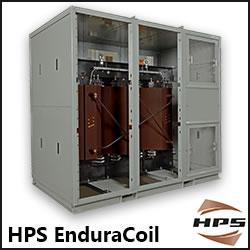I can hook you up with a cable tie that’ll perform for 40 years or more in harsh conditions. Or maybe it will only last half that long, or much less. Your call. Install it wrong, and its potential longevity is meaningless.
 Making the Case for Cable Ties in Solar
Making the Case for Cable Ties in Solar

Brent Brucker, Head of Strategic Sales & Key Accounts, Sales | HellermannTyton
Working the wire-management end of the solar market means I see it through a unique lens. We all acknowledge decisions in this area matter. Yet, the determination and planning that check the right boxes are based on individual preference.
Every choice in this industry carries weight. Still, the lower-cost considerations often don’t get the attention they deserve. That seems fair.
Over the past five years, I’ve watched this segment of the industry evolve – sometimes for the better, other times not. Site owners and asset managers have learned the hard way what happens when wire management is neglected. A poorly crafted plan can unravel well before its time … maybe a few years, often sooner.
Consider the harsh conditions these systems endure: extreme temperatures, relentless sunlight (after all, that’s the point), wind, etc. Now add the constant rocking of a tracker system, and you’ve brewed a perfect storm for surprise repairs. The frustration over costly fixes has driven a surge in wire management specs for EPCs to follow.
These guidelines, likely born from good intentions, are what I want to unpack.
You’ll often see rules like, “No cable ties shall be used for cable support,” and “Only metal-core wire management devices may support PV cables.”
My guess? These rules popped up after someone made a big mistake. That someone took over a PV grid or stepped into daily operations, only to face the unexpected: cables on the ground, ongoing maintenance headaches and the mounting costs. Determined to avoid a repeat, they mandated metal solutions.
The upside: someone finally calculated the value of responsible wire management and corrected course.
But here’s where things get tricky. Most products work fine if used as intended. Of course, understanding what “used as intended” means requires – as I teased earlier – determination and planning.
Run any plastic part along a metal panel edge or into a metal hole, it’s done for. Same goes for coated metal parts.
Picture that tracker rocking back and forth like a steak knife. Can you predict what every metal clip or coated steel cable will do sooner or later? Nope, because none of us can.
Sure, the metal will last as long as your system. But what if it chews through the cable’s insulation? Will you catch the issue? While we’re asking the hard questions, what kind of plastic are your parts made of? And your metal? Are they up to the task ahead? How certain are you?
So, how do you gauge the condition of your solar site’s wire management? If you’re relying on metal or coated-metal parts, make some time to check the hundreds of thousands of clips, clamps and ties. Overlooked cable wear can spark major trouble – think arcs, fires and pure chaos. These are headaches the industry’s starting to experience.
The headline of this story includes “cable ties,” so I’ll get to the reason I wrote this piece. I recently returned to a PV farm in Southern California that’s been operational for 12 years. Our crew collected samples of our early solar-grade products (an older formula) and put them through strength tests. Turns out, they’re tougher now than when we installed them.
It proved what we’ve long believed. The issue isn’t cable ties – or even plastic. It’s about selecting the right material and utilizing the appropriate parts. Honestly, it’s the same way you’d spec metal solutions.
Cable ties are a marvel of industrial product design, celebrated across the globe for their apparent simplicity and abundance.
I can hook you up with a cable tie that’ll perform for 40 years or more in harsh conditions. Or maybe it will only last half that long, or much less. Your call. Install it wrong, and its potential longevity is meaningless.
Moral of the story, maybe the problem isn’t the cable tie after all.
The content & opinions in this article are the author’s and do not necessarily represent the views of AltEnergyMag
Comments (0)
This post does not have any comments. Be the first to leave a comment below.
Featured Product

